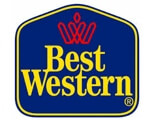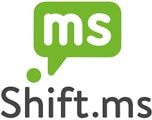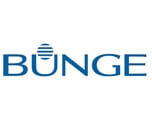Working in the Voice Over industry we are suckers for a good bit of technical jargon!
Mark Cashman from Cashman Commercials has compiled a list of commonly used terms, to help those who may be new to this field, or for those who want to brush up on their technical terms.
Here’s a good selection to get you started…
ADR: Automated Dialogue Replacement in a film. A process where actors replace dialogue in a film or video.
Ad lib: A spontaneous spoken addition or alteration to a written script.
Accent: Pronunciation common to a certain group of people. (see our previous post on British accents : http://adelphi-blog:8888/accents-in-voice-overs-british-accents-part-1/)
Announcement: A commercial or non-commercial message. Also referred to as a spot.
Announcer: The role assigned to a voice-actor that usually has non-character copy. Abbreviated as ANN or ANNC on scripts.
Articulation: The formation of clear and distinct sounds in speech
Audio: Transmission, reception or reproduction of sound.
Audition: A non-paying, trial performance for voice talent where voice-over copy is read. Usually takes place at an agent’s office, an ad agency, a casting director’s office, or a production company’s studio, and usually the best actor is selected for the final job…usually!
Availability: Literally, the time an actor is available for a session. Advertisers or producers will call an agent to find out about an actor’s availability.
Back Bed: The instrumental end of a jingle, usually reserved for location, phone numbers, legal disclaimers, or any other information the advertiser needs to add.
Bed: The music or SFX behind or under an announcer’s voice.
Bleed: Noise from the headphones being picked up by the microphone or from other ambient sources, like other tracks.
Booking: A decision and commitment on the advertiser’s part to hire you for a session. The client calls the actor or actor’s agent to book an actor for a job. Your agent would say, You have a booking at 1PM tomorrow.
Boom: An overhead mic stand.
Booth: An enclosed, soundproofed room where voice talent usually works.
Branching: Recording one part of a sentence with variables within that sentence as a means of customizing a response. Often recorded for multimedia games and voice mail systems. Also known as concatenation.
Buy-out: A one-time fee paid for voice-over services on a commercial. Common in many non-union situations and industrials, as well as CD ROMs, dubbing, looping and A.D.R. work.
Cadence: How breaks are placed between words.
Call Time: The time scheduled for an audition.
Cans: Another word for headphones.
CD-ROM: Compact Disc-Read Only Memory.
Character: The person an actor is cast as in a spot.
Cold Read: An audition where an actor is given no time to rehearse.
Colour: Subtle speech nuances that give texture and shading to words to make them interesting and meaningful.
Commercial: Also referred to as a spot, it is a pre-recorded message which advertises a product or service. Sometimes abbreviated as COMML.
Compression: Reduces the dynamic range of an actor’s voice. Engineers apply compression to cut through background music and sound effects.
Control Room: Where the engineer and producer (and many times, the client) are located. This is usually a separate room from the booth.
Cue: An electronic or physical signal given to an actor to begin performing.
Cut: A specific segment of the voice-over recording, usually referred to during editing.
Dead air: When a voice-over pause is too long.
Demo: A demonstration of an actor’s voice talent.
Dialogue: A script calling for two people talking to each other.
Director: The person responsible for giving an actor voice-over direction in an audition, session or class.
Distortion: Fuzziness in the sound quality of a recorded piece.
Drop off: Not ending strong at the end of a word or phrase.
Drop out: A minute moment of silence inside a recorded word or phrase.
Dubbing: This dubbing is the process of dialogue replacement in a foreign film, as in dubbing a French voice into English.
Earphones: Also known as cans, headphones or headsets. Worn during the session to hear your own voice as well as cues and directions from the engineer or producer. Also used to converse with the client during an ISDN or phone-patch session.
Echo: A repetition of sound.
Editing: The removal, addition or re-arrangement of recorded material. Voice elements can be spread apart, slowed down, speeded up, clipped, eliminated, etc. to achieve the final take.
EFX: Effects. Another term for SFX.
Engineer: The person who operates the audio equipment during the voice-over session.
Equalization: Also known as EQ, it is used to stress certain frequencies, which can alter the sound of a voice.
Fade: To increase or decrease the volume of sound.
Fade in/Fade out: When you turn your head away from the mic or towards it.
False start: Situation where a talent makes a mistake within the first line or two of copy. The take is usually stopped and sometimes re-slated.
Feedback: A distorted, high pitched sound, usually emanating from headphones or speakers. Many times caused by problems with the console or headphones getting too close to the microphone.
Foley: Also known in the business as a Foley Stage, this is a special sound stage used for source sound effects. Used to record up-close sound effects for film or video, where the Foley artists match sound with picture, such as walking, running, doors opening or closing, glass breaking, shots firing, etc.
Front bed: The opposite of the back bed, where the announce is at the beginning of a jingle.
Gain: The volume of a voice, or a fader on the console.
Gobos: Portable partitions positioned around the actor to absorb or reflect sound, or to isolate the actor from another on-mic actor.
Hard sell: Approach used for high volume retail clients. One producer refers to hard sell as: I’ll stop shouting when you start buying!
Highs: The high frequency sound of a voice.
Holding fee: The money an actor receives if the client wants to hold a spot for airing at a later date.
Hook: Starting out on a high note on the first word of a spot to grab attention and immediately dipping down. Also used to describe the chorus section of a song.
In-house: A production produced for the client in the client’s own facilities.
inflection: The raising or lowering of voice pitch i.e a way of reinforcing the meaning of a word by changing the way it is said.
ISDN: Integrated Services Digital Network. Special high-quality lines that allow voice recording to be digitally transmitted from one recording facility to another.
Jingle: A musical commercial.
Level: To set a voice at the optimal volume for recording. When the engineer says, “Let’s get a level”, the actor will start reading the copy at the level they’ll be speaking throughout the spot.
Library music: Pre-recorded music that producers use when the budget doesn’t allow original music. Each piece of music requires a fee to be paid, usually on an annual basis.
Lows: The low frequency of a voice.
Marking copy: Placing different marks above, below, around, in between and circling words on a script. Best done in pencil, because direction or emphasis may change.
Master: The original recording that all dubs are made from.
Mic: A common form of the word mike, as in microphone.
Mix: The blending of voice, sound effects, music, etc. Final mix usually refers to the finished product.
Monitors: The loudspeakers in the control room.
Mouth noise: The clicks and pops a microphone picks up from a dry mouth.
MP3: The name of the file extension and also the name of the type of file for MPEG, audio layer 3. Layer 3 is one of three coding schemes (layer 1, layer 2 and layer 3) for the compression of audio signals. Layer 3 uses perceptual audio coding and psycho acoustic compression to remove all superfluous information (more specifically, the redundant and irrelevant parts of a sound signal. The stuff the human ear doesn’t hear anyway. The result in real terms is layer 3 shrinks the original sound data from a CD (with a bit rate of 1411.2 kilobits per one second of stereo music) by a factor of 12 (down to 112-128kbps) without sacrificing sound quality.
Multitrack: A machine capable of recording and replaying several different tracks at the same time.
Music bed: The soundtrack that will be placed behind the copy, or mixed in with it.
Outtake: A previous take that hasn’t been approved and accepted.
Overlapping: When an actor starts his or her line a moment before another actor finishes theirs.
Pace: The speed in which an actor reads copy.
Paper noise: Sound that the mic picks up as you move your script. Set it on the mic stand and leave it alone. If you have two pieces of copy and no stand, hold one page in each hand. If you have more than two pages, you may stop, place the next page in front of you, and continue. The engineer will accommodate you, as they don’t want to have to edit out paper noise.
Patch: To make an electrical/digital connection for recording and/or broadcast. Also referred to as a phone patch or land patch.
Phasing: When sound reflects or bounces of certain surfaces and causes a weird, disjointed effect in the recording.
Pick-up: Re-recording a section of copy at a certain point. 90% of your read may be a in the can, but there may be a phrase, sentence or paragraph that the director feels could be done a bit better, clearer, faster, slower, etc. The director tells you exactly where they want you to pick-up†your line(s)—where to start from and where to end at. Read a sentence or phrase before the pick-up starting point, as well as the ending point. This is done to help the engineer better edit the pick-up, matching phrasing and levels.
Pick-up session: An additional session to complete the original. There may be copy changes or character changes in a spot before it finally airs. This is usually due to the client changing their mind before they commit the spot to air.
Playback: Listening to what has just been recorded.
Plosive: Any consonant or combination of consonants that causes popping e.g P’s and B’s.
Pop: When voice sounds are registering too hard into the mic. Usually caused by plosives.
Pop Shield: A foam cover enveloping the mic or a nylon windscreen in front of the mic. Mitigates popping.
Post-Production: Also known as post. The work done after the voice-talent has finished recording the session. This includes mixing in SFX and music.
Producer: The person in charge of the voice-over session. Many times the producer is also the director.
Promo: A promotional commercial spot used by TV and Radio stations specifically to increase audience awareness of upcoming programming.
PSA: Public Service Announcement. Commercials produced to raise awareness of current issues, such as smoking, drug abuse, pollution, pregnancy, etc.
Resonance: The full quality of a voice created by vibrations in resonating chambers, such as the mouth and sinus areas.
Reverb: A variation of echo. It’s an effect added to your voice in post.
Rough Mix: The step before the final mix. This is when the producer and engineer fine-tune levels of voice, music and sound effects.
Run-through: Rehearsing the copy before recording. Like a dress rehearsal.
SFX: Shorthand for sound effects. Also seen as EFX.
Session: The event where a talent performs a script for recording purposes.
Session fee: Payment for the first commercial within the session. If an actor does two spots, they get a session fee plus payment for the other spot. If the same actor does a tag, they get a separate tag fee. And if they record only two tags, they get paid session plus one tag.
Sibilance: A drawn out or excessive S†sound during speech. Some sibilance is joined with a whistle. This is a very annoying sound, which some engineers mitigate with a sound tool called a de-esser.
Spot: A commercial. Originated from the days when all commercials were performed live, in between songs played on the radio. The performers were on the spot.
Studio: The facility where all recording and mixing for a commercial takes place.
Sync: Matching a voice from a previous take. Also refers to aligning tracks to start or end together.
Tag: Information placed at the end of a commercial containing a date, time, phone number, website address, legal disclaimer, etc. A different announcer sometimes reads the tag.
Take: The recording of one specific piece of voice-over copy. All takes are numbered consecutively, usually slated by the engineer.
Talent: A broadcast performer, entertainer or voice-over artist.
Talkback: Refers to the button connected to the microphone in the engineer’s console. It allows the engineer or director to talk to the talent in the booth.
Tempo: The speed at which copy is delivered.
Time code: A digital read-out on the engineer’s console referring to audiotape, videotape positions. Used in film dubbing.
Tone: A specific sound or attitude.
Track: Either to record, or the actual audio piece. We’re ready to track, as opposed to Listen to this track.
Trailer: A commercial that promotes a film or video release.
V-O: Short for voice-over. Also seen as AVO (announcer voice-over). It’s the act of providing a voice to a media project, where the voice is usually mixed over the top of a video and or music/SFX. Voice-over was the term originally used to describe an announcer’s voice on a television spot, referring to the process as voice over picture. The more accurate term now is voice acting, which is the art of using the voice to bring life to written words.
VU meter: A meter on the engineer’s console that indicates the level of sound passing through the board.
WAVE File: Also known as .wav. A common uncompressed audio file format.
Wet: A voice or sound with reverb added to it.
So there it is! A list of commonly used terms in the Voice-Over industry! If you are interested in having a Voice Over recorded, please visit our website, where you can also view samples of all our Artists, and fill out the form for a Free Quote! https://adelphistudio.com/voice-overs/
Adapted and compiled from the following sources:
• James Alburger, The Art of Voice-Acting; Focal Press (1999)
• Susan Blu & Molly Ann Mullin, Word of Mouth; Revised Edition, Pomegranate Press (1996)
• Terri Apple, Making Money in Voice-Overs; Lone Eagle Publishing Company (1999)
• Alice Whitfield, Take It From The Top; Ring-U-Turkey Press (1992)
• Sandy Thomas, So You Want To Be A Voice-Over Star; In The Clubhouse Publishing (1999)
• Terry Berland & Deborah Ouellette, Breaking Into Commercials; Plume Publishing (1997)
• Chris Douthitt & Tom Wiecks, Putting Your Mouth Where The Money Is; Grey Heron Books (1996)
• Chuck Jones, Making Your Voice Heard; Back Stage Books (1996)
• Bernard Graham Shaw, Voice Overs: A Practical Guide; Routledge Publishing (2000)
• Elaine A. Clark, There’s Money Where Your Mouth Is; Back Stage Books (2000)
MARC CASHMAN creates and produces copy and music advertising for radio and television. Winner of over 150 advertising awards, he also instructs voice acting of all levels through his classes, The Cashman Cache of Voice-Acting Techniques in Los Angeles, CA.
Cashman Commercials © 2005
Facebook
Pinterest
Google+





